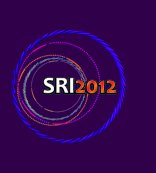Dr
Ana Diaz
(Paul Scherrer Institut)
06/07/2012, 09:00
Direct detection area detectors for storage rings
X-ray diffraction is characterized by a rapidly decaying signal in reciprocal space which requires a large dynamical range for its detection. Besides this common feature, the ideal detector features may differ depending on the nature of different experiments, like for example Small Angle X-ray Scattering, Protein Crystallography, and Coherent Diffraction Imaging. Additionally, scanning schemes...
Dr
Ian Johnson
(PSI)
06/07/2012, 09:25
Direct detection area detectors for storage rings
Eiger is a single-photon counting X-ray pixel detector being developed at the Paul Scherrer Institut for applications at synchrotron light sources. It follows the widely utilized and successful Pilatus detector. The major advantages over the Pilatus system are the smaller pixel size (75 μm), higher frame rate capability (22 kHz) and negligible readout dead time (4 μs). These enhanced features...
Dr
Julien Marchal
(Diamond Light Source)
06/07/2012, 09:50
Direct detection area detectors for storage rings
The EXCALIBUR detector is a small-pixel photon counting area detector developed by the Diamond Light Source and the Science and Technology Facility Council in the UK for coherent X-ray diffraction. EXCALIBUR is based on the 55 micron pixel size read-out ASIC developed by the MEDIPIX3 collaboration. This talk describes the geometry of EXCALIBUR modules consisting of 16 MEDIPIX3 ASICs...
Dr
Mark Tate
(Cornell University)
06/07/2012, 10:15
Direct detection area detectors for storage rings
A variety of pixel array detectors (PADs) under development at Cornell are described. Analog integration of the x-ray induced signal has been used extensively within the pixels of these detectors to allow for imaging with x-ray fluxes which would exceed photon counting limits. Using analog integration, however, does not preclude imaging with single photon sensitivity. High quality imaging can...

